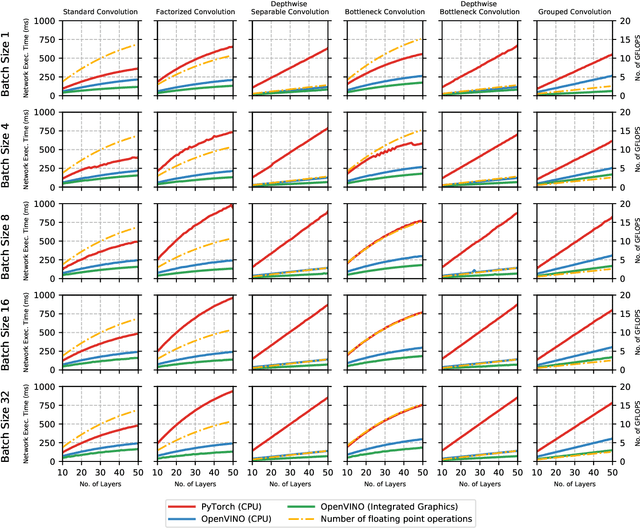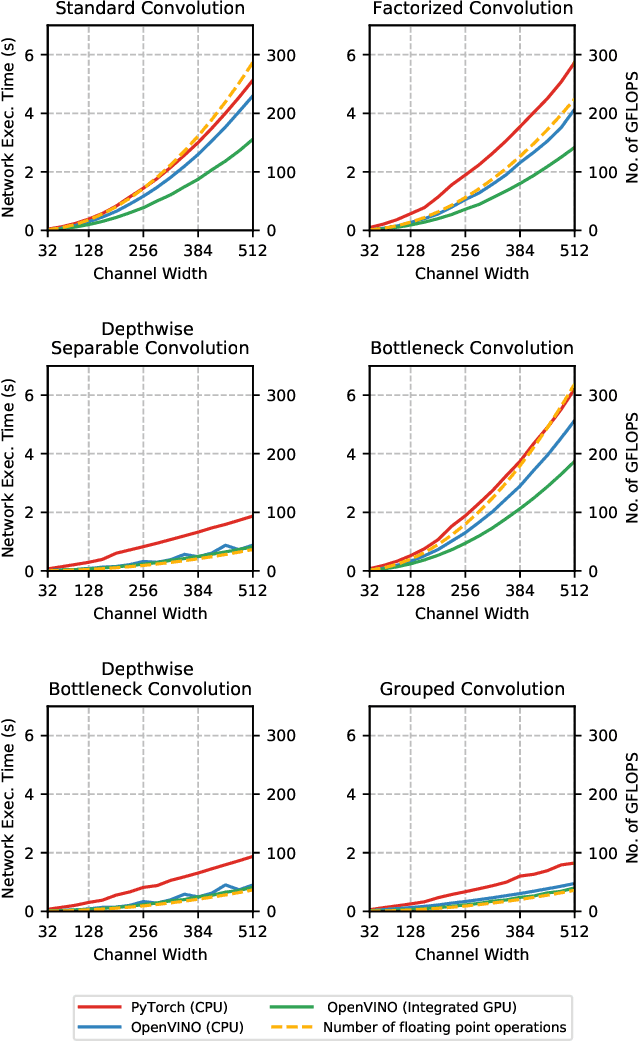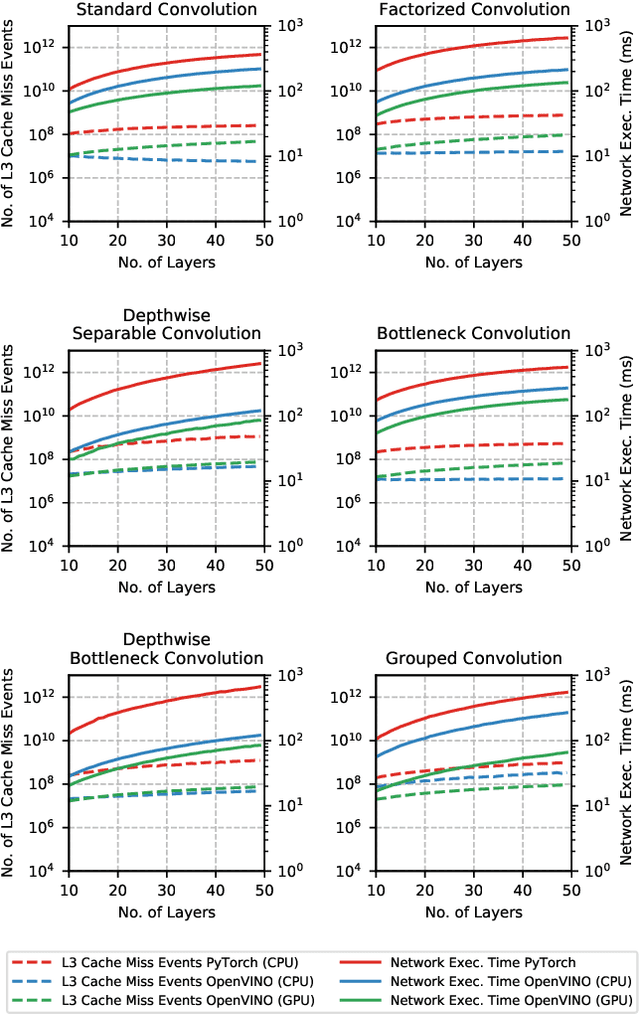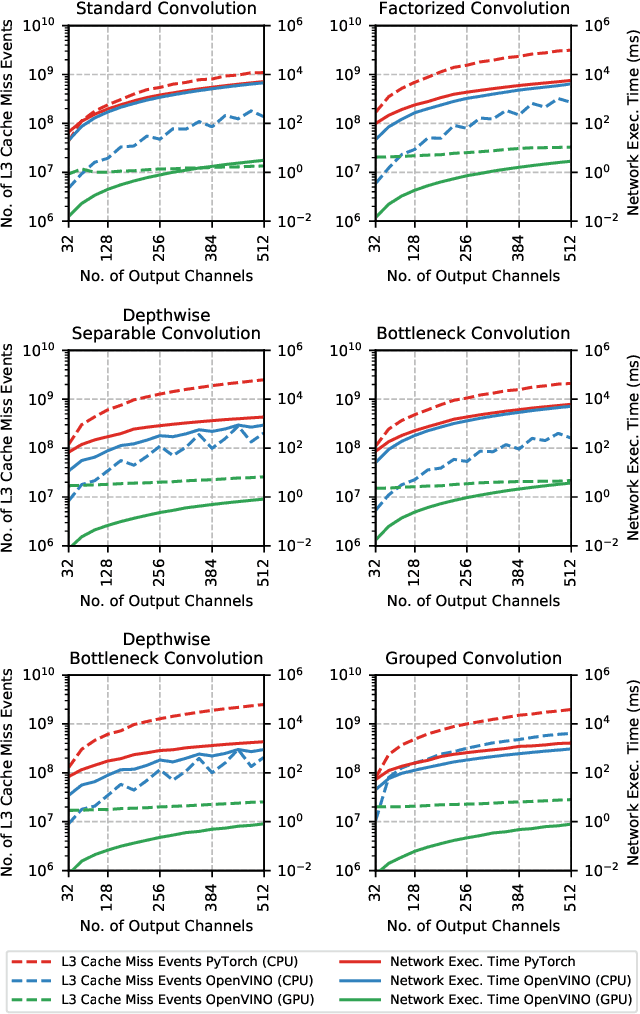Does Form Follow Function? An Empirical Exploration of the Impact of Deep Neural Network Architecture Design on Hardware-Specific Acceleration
Paper and Code
Jul 08, 2021



The fine-grained relationship between form and function with respect to deep neural network architecture design and hardware-specific acceleration is one area that is not well studied in the research literature, with form often dictated by accuracy as opposed to hardware function. In this study, a comprehensive empirical exploration is conducted to investigate the impact of deep neural network architecture design on the degree of inference speedup that can be achieved via hardware-specific acceleration. More specifically, we empirically study the impact of a variety of commonly used macro-architecture design patterns across different architectural depths through the lens of OpenVINO microprocessor-specific and GPU-specific acceleration. Experimental results showed that while leveraging hardware-specific acceleration achieved an average inference speed-up of 380%, the degree of inference speed-up varied drastically depending on the macro-architecture design pattern, with the greatest speedup achieved on the depthwise bottleneck convolution design pattern at 550%. Furthermore, we conduct an in-depth exploration of the correlation between FLOPs requirement, level 3 cache efficacy, and network latency with increasing architectural depth and width. Finally, we analyze the inference time reductions using hardware-specific acceleration when compared to native deep learning frameworks across a wide variety of hand-crafted deep convolutional neural network architecture designs as well as ones found via neural architecture search strategies. We found that the DARTS-derived architecture to benefit from the greatest improvement from hardware-specific software acceleration (1200%) while the depthwise bottleneck convolution-based MobileNet-V2 to have the lowest overall inference time of around 2.4 ms.
 Add to Chrome
Add to Chrome Add to Firefox
Add to Firefox Add to Edge
Add to Edge